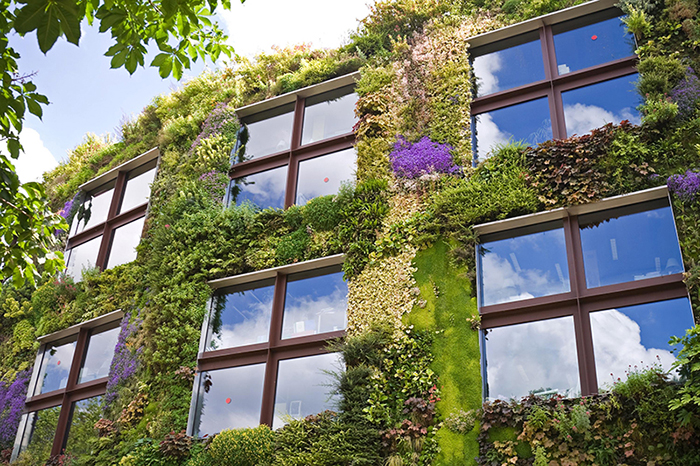
AN insurance specialist has urged construction companies to assess the risks associated with living walls, which may not be fully covered by standard insurance policies.
Lee Musgrove of insurance broker Lycetts has issued the warning as the demand for sustainable ‘vertical gardens’ grows.
“With the increasing integration of green roofs and living walls in modern architectural designs, there is a pressing need to address the fire risks linked to the materials used in these on-trend systems,” Musgrove explained. “While we wholeheartedly support the move towards sustainable buildings that contribute to net zero targets, it’s crucial that safety is not compromised in the process.”
Highlighting the potential dangers, he pointed out that all cladding systems feature a backing wall with insulation and that even when cavity barriers are installed correctly, some components might still be combustible, posing a risk of fires spreading.
“To mitigate this, it’s essential that the backing wall, insulation and supporting structures – including potting, irrigation and drainage systems – are constructed from non-combustible materials wherever possible,” he added. “The impact of severe weather events and potential water leaks can significantly affect the safety and insurability of the building, as well as adjacent structures, if the living wall is not meticulously designed, installed and maintained.”
Musgrove also pointed out the unique challenges posed by green roofs.
“Unlike conventional roofs, green roofs are considerably heavier due to the additional weight of the support structure, the requisite irrigation systems as well as the plants themselves,” he said. “Plus, the extra water retention capacity during heavy rainfall must also be factored into architectural considerations.”
To ensure the longevity and safety of these sustainable features, Musgrove recommends installers conduct extreme water tests immediately after installation to check for leaks and consider installing electronic leak detectors. Annual inspections are also advised to remove problematic plants and those developing strong, deep roots to reduce the risk of leak damage.
Furthermore, he recommends construction companies engage a structural engineer during the design phase to assess load-bearing capacity and ensure the building is fit to support these installations. Fall protection measures and access for ongoing maintenance should also be planned into the design.
“Living walls and green roofs offer numerous environmental, aesthetic and health benefits but the ongoing maintenance and repair can be a challenging and costly process,” Musgrove added. “I would urge any construction company involved in a new sustainability project or retrofit that incorporates a living wall to consult their insurer during the planning stages to mitigate the risks and ensure the creation of buildings that are not only stunning and sustainable but also safe.”










